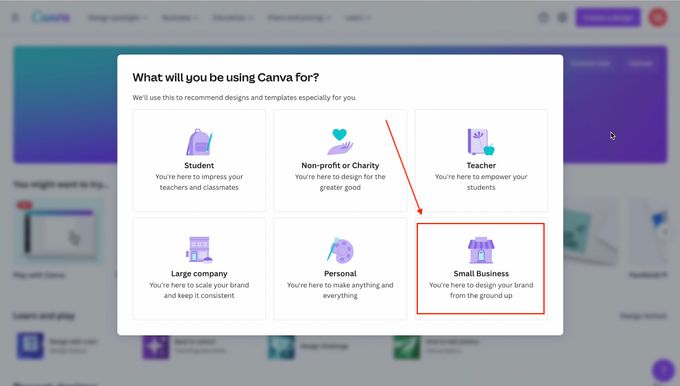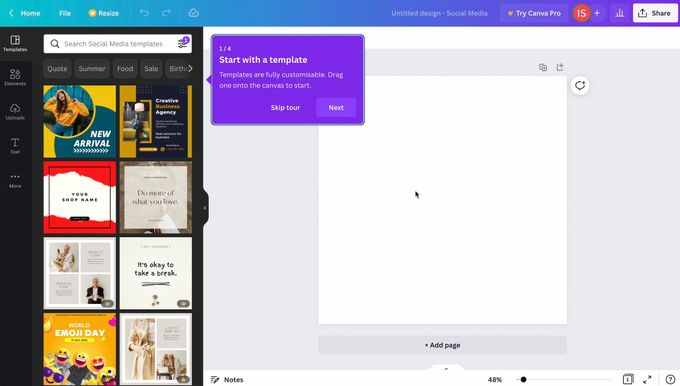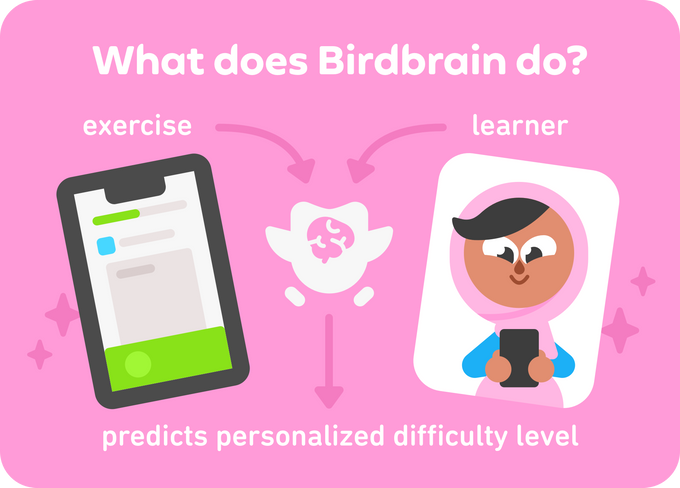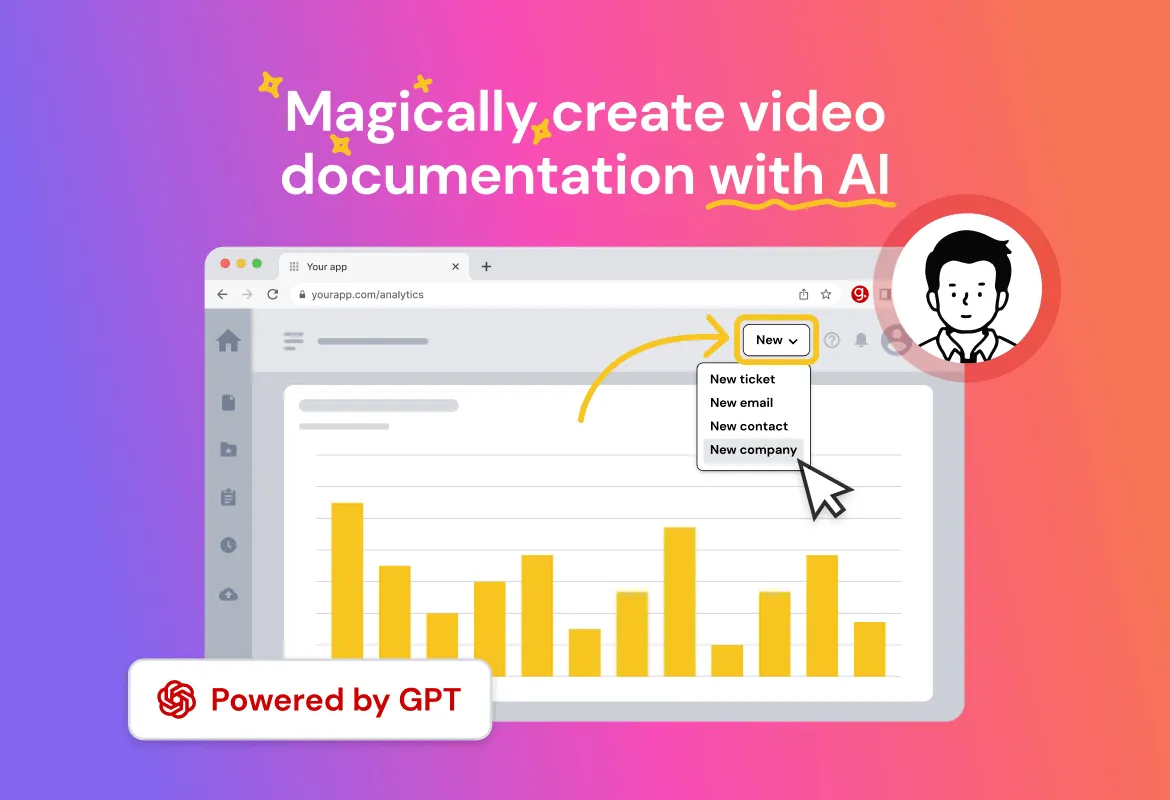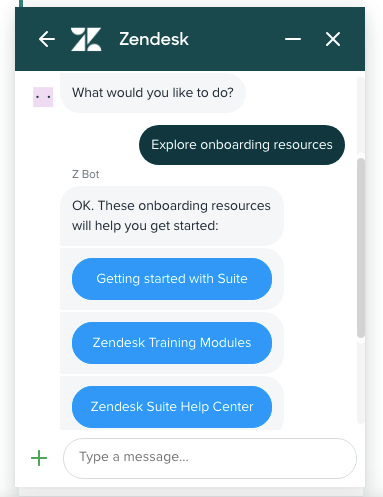Leveraging AI for Improved User Experience in SaaS Onboarding
AI can help you make onboarding UX personalized at scale. Here's how.
Published April 23, 2024.

Onboarding is the first experience your SaaS customers have with your product, and you want it to be a great one. If you don't capture your leads early with a considered onboarding experience, you're at risk of losing them. And, up to 75% of customers won't buy your product if they aren't happy with the onboarding.
With tech enhancements, you can implement a seamless AI-powered SaaS onboarding flow that guides customers through everything they need to know. Below, we'll take a look at how AI can help you improve your user experience for happy customers every time.
» Explore the ultimate guide to onboarding and training new customers
Why Is UX Important in SAAS Onboarding?
When you enhance UX during onboarding, both users and SaaS providers benefit. A well-designed onboarding process educates users on product use, reducing the need for customer support and saving resources. This leads to higher customer satisfaction and retention, empowering users and increasing product competency.
» Check out this essential customer onboarding roadmap for SaaS
How AI Can Improve UX in SaaS onboarding
A positive user experience in SaaS onboarding boils down to two key details: personalization and efficiency. Here's how AI can help.
Personalization With Contextual Onboarding
Personalization increases the chances of successful SaaS onboarding by making it more relevant to the user.
AI enables personalized onboarding experiences by analyzing user behavior, preferences, and interactions within the platform. By tailoring tutorials, content, and support to each user's needs, AI makes the learning process more engaging and relevant.
For example, Canva uses a welcome survey to get an idea of who their new sign-up is.
Then they customize new users' dashboards with templates based on their roles.
As you see in the screenshot above, contextual onboarding—that is, delivered in-product or in-app—can be adapted to user behavior and needs with personalized flows.
AI can also identify the most relevant features for each user based on their behavior, accelerating their journey to becoming productive users.
Example: Duolingo's Birdbrain model is an AI tool that predicts personalized learning difficulty, based on past behavior, offering more challenging questions as learners get more adept.
» Unlock the best step-by-step guide to SaaS customer onboarding
Streamlined Onboarding Documentation
AI can facilitate the creation of onboarding materials, such as AI-generated videos, which can be produced in a fraction of the time and cost of traditional methods.
Example: Platforms like guidde give you the tools to create quick guided video process flows with instant AI documentation. You simply hit record on the browser extension and when you're finished recording, your knowledge database will now include a video as well as an annotated guide below it so users can quickly find what they're looking for.
AI-powered tools can also analyze user behavior data to identify common challenges and pain points, allowing for the creation of targeted, context-specific documentation. By continuously learning from user interactions, AI can optimize the onboarding flow, making it more intuitive and effective for future users.
Real-Time Support
Chatbots can guide users through account setup, recommend next steps based on progress, and demonstrate how to use specific features. By employing natural language processing (NLP), these AI tools can understand and respond to user inquiries in real-time, offering personalized assistance and recommendations.
Here are some of the benefits of chatbots:
- Instant, 24/7 Assistance: They address a critical need, especially considering a smooth onboarding process is directly linked to higher customer retention rates
- Efficiency: Automate routine tasks, freeing human resources to focus on more complex inquiries
- Personalization: AI can analyze vast data to offer personalized onboarding experiences, tailoring interactions based on user behavior and preferences
- Multilingual Support: Enhance accessibility and global reach by catering to a diverse customer base
Example: Zendesk, for example, uses AI to offer a streamlined onboarding process with instant support through chatbots.
This real-time support improves user satisfaction and reduces the workload on customer support teams.
» Improving customer service? Check out the best benefits of chatbots
Best Practices for Integrating AI into SaaS Onboarding
Integrating AI into your SaaS onboarding process can significantly enhance the user experience and ensure efficient learning and adaptation to your software. Follow these best practices to effectively implement AI in your onboarding:
Step 1: Identify User Challenges and Pain Points
- Analyze user behavior data to understand the common difficulties users face during onboarding.
- Use tools like Google Analytics, Mixpanel, or Hotjar to track user interactions and identify areas where users struggle or drop off.
- Conduct user interviews or surveys to gain insights into their onboarding experience and expectations.
Step 2: Tailor AI Solutions to Address Specific Issues
- Based on the identified challenges, develop AI-powered solutions such as personalized learning paths or intelligent recommendations.
- Implement AI-driven chatbots or virtual assistants to provide real-time support and guidance to users, adapting to each learner's pace and preferences.
- Use machine learning algorithms to analyze user data and create targeted content or feature recommendations based on their role, industry, or usage patterns.
Step 3: Develop AI Functionalities That Continuously Learn and Improve
- Set up mechanisms for AI algorithms to collect data on user engagement with the onboarding material.
- Identify metrics to track the effectiveness of onboarding, such as completion rates, time spent on each step, and user feedback scores.
- Utilize machine learning models to analyze the collected data and optimize the onboarding flow based on user behavior and preferences.
- Continuously refine and update AI functionalities based on user interaction data to ensure the onboarding experience remains relevant and effective.
Step 4: Integrate AI Seamlessly Into the User Experience
- Ensure that AI-powered features, such as chatbots or personalized recommendations, are easily accessible and intuitive for users.
- Design the onboarding flow to incorporate AI elements naturally, without disrupting the user's journey or causing confusion.
- Provide clear explanations and instructions on how to interact with AI-driven features to encourage user adoption and engagement.
Step 5: Monitor and Measure the Impact of AI on Onboarding
- Track key performance indicators (KPIs) such as onboarding completion rates, time-to-value, and user satisfaction scores to evaluate the effectiveness of AI-powered onboarding.
- Analyze user feedback and support tickets related to onboarding to identify areas for improvement and further optimize the AI-driven experience.
- Continuously iterate and refine your AI implementation based on data-driven insights and user feedback to ensure ongoing success.
» Need business growth? Learn the best practices for customer onboarding
Overcoming AI Implementation Challenges
Data Protection
Integrating AI into SaaS onboarding is not without its challenges. First and foremost, data privacy and security are paramount. AI systems need access to user data to tailor the onboarding process, but users must also have confidence that their data is safe, making strong data security measures a necessity.
Solution: Design AI systems with ‘privacy by design’ principles. Ensure data is encrypted, securely stored, and processed according to legal requirements like GDPR. Be transparent with users about how their data is used and give them control over their information to build trust.
A Memorable Onboarding Experience
Another hurdle is ensuring the AI doesn’t deliver a generic or impersonal onboarding experience. AI systems learn from large data sets to provide accurate predictions and recommendations.
If the data is insufficient or not relevant, the AI might make suggestions that don’t match the user’s needs or context, which could compromise the effectiveness of the onboarding process.
Solution: Invest in initial training of AI systems with diverse and comprehensive datasets. Monitor and adjust the systems based on user feedback and interaction data. Design personalization algorithms to adapt and refine their recommendations over time, ensuring they stay relevant and beneficial to the user.
The Personal Touch: AI-Powered UX
A smoother onboarding experience leads to higher user engagement and loyalty, generating even richer data for further AI optimization.
Ready to unlock the power of AI for exceptional onboarding? Platforms like guidde empower you to create personalized, step-by-step video guides that keep users engaged and ensure a seamless transition. Explore the possibilities and elevate your onboarding experience today!
